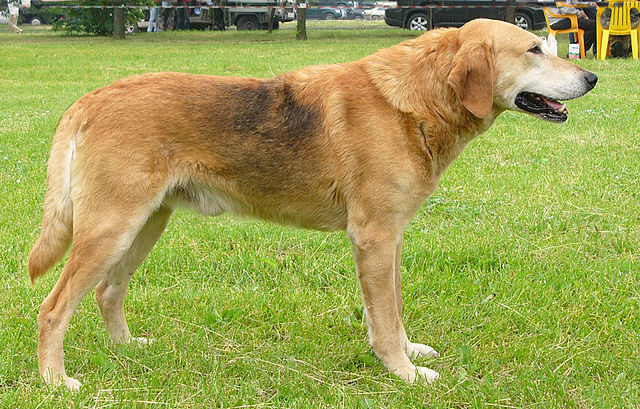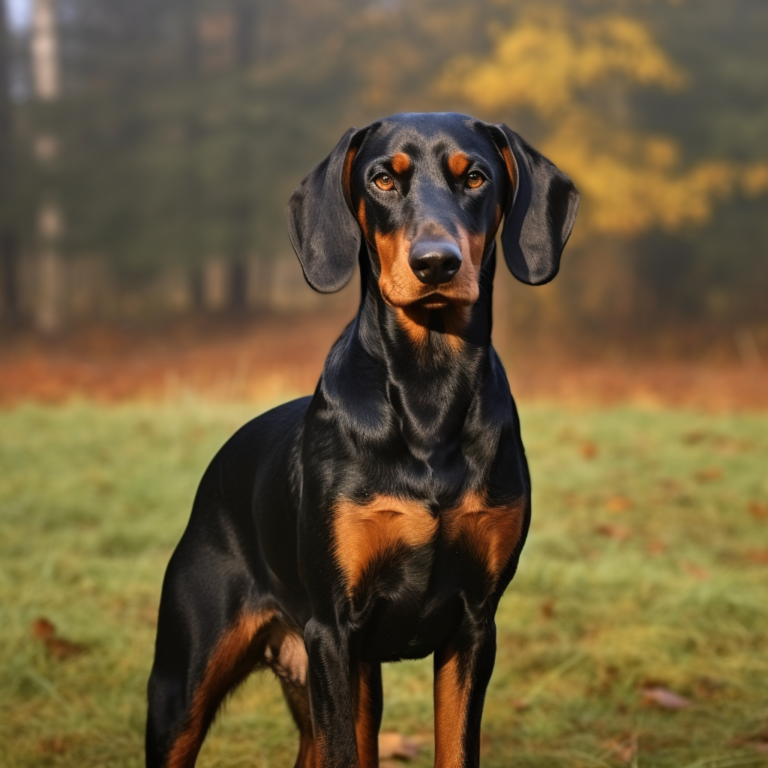The Bloodhound is not named so because he is a “bloodthirsty” dog, in fact he is one of the gentler breeds in dogdom today. The name actually comes from the expression “blooded hound”, which basically means pure-blood or purebred. Actually, they love being with their people and want to be included whenever possible. Those looking for a guard dog will not find those qualities in a Bloodhound as they love people too much. They are generally very good with children but because of their size and their activity level, many do not make good companions for very small children. Most Bloodhounds are great with other dogs, having to do with the fact that they were bred to hunt in packs.
Not surprisingly, the Bloodhound has the greatest sense of smell of any breed. It is true that he is still used today with Police and Search and Rescue organizations to find lost people, pets, and property. This nose can be a curse as well as a blessing, however. Potential owners must never let their dog off leash in an unfenced area as a Bloodhound will soon follow his nose toward the most interesting smell he can find, regardless of traffic or other dangers. A six foot fence is recommended at home for this same reason, secured tightly as they can be escape artists.
Bloodhounds can be supremely stubborn dogs, which can make training more difficult than with other breeds. Part of this stubbornness comes from the fact that they are very independent, a feature of many scenthounds. Bred to work in packs and be self-sufficient while out on a hunt, the stubborn dogs were actually preferred because they could get the job done out of pure willfulness. While great for hunting, this feature is not so great for easy training. Patience is key, as well as keeping the training interesting enough to elicit their natural curiosity. Using enticing rewards can also help motivate a particularly willful dog.
These dogs do need exercise, but it should be mentioned that while they are growing, puppies shouldn’t be made to exercise more than their joints can handle. This is the case for most giant-large breeds with a lot of bone (substance). As far as how much exercise your Bloodhound will need once he is grown, that is highly dependent upon the individual dog. Older Bloodhounds require little activity, but most young adults are in the range of “moderate – quite a substantial amount”. It is best to choose a dog from a line with the type of energy that you want so you can have a compatible companion. This is where it becomes very important to talk with breeders and meet their dogs.
Just as Bloodhounds differ in terms of energy, they can also differ greatly in other aspects such as dominance and drive. Most families will want to look for a low-drive, lower energy dog with a calm temperament (this might mean purchasing a slightly older dog, as their exercise needs will decrease with age). Only people who are both prepared for, and experienced with, high drive dogs should seek out these traits. 
As puppies and through the young adult stages, Bloodhounds can be destructive. Not only do they need plenty of supervision to keep them from being mischievous, but also need house rules, exercise, and games to keep their minds busy. What type of destruction are they capable of? Digging in the yard, grabbing/eating non-edible objects in the home, chewing furniture, stealing food, and climbing on furniture just to name a few. Grabbing your stuff and carrying them around is another favorite pastime. Add in the fact that they are incredibly smart and can figure out how to open doors or use the ice machine on your fridge, and you can see that Bloodhounds will keep their owners very busy! For teething puppies and young adults alike, the Benebone is an absolute must-have – https://amzn.to/410F5TG
For those that stick through it, all the while administering fair rules and discipline, Bloodhounds can be trained to compete in all sorts of events! Rally, trailing, dock diving, obedience, tracking, agility, coursing (for those with a chase instinct), barn hunt, conformation, and therapy work are but a few of the areas you can have fun with dog in. Just know that even if training is difficult, the results will pay off in the end! As some Bloodhounds can be dominant and/or possessive, house rules are very important so even if you do not train your dog in formal obedience, he should be taught “the basics”.
Because they are such large dogs, Bloodhounds can be expensive to feed when they are growing as they will go through a lot of food. Some might go through a picky stage while teenagers, but overall will still eat more than most dogs. They are also known to be droolers. This is at its worst when you are preparing their dinner, although they definitely drool a good portion of the time. Experienced owners keep hand towels throughout the house to wipe drooly mouths. Bloodhound drool can reach the ceiling with a good head shake, so potential owners must be comfortable with this fact!
Despite their short coats, there still is some grooming to take care of on a regular basis. Bloodhounds do shed and need to be kept brushed out on a regular basis. Their eyes, ears, and wrinkles must also be cleaned on a daily basis.
Affiliate Disclaimer
As an Amazon Associate, I earn from qualifying purchases. This means that if you click on an affiliate link on this site and make a purchase, I may earn a small commission at no additional cost to you. Rest assured that I only link to products I have used, or use on a regular basis, and trust enough to recommend them to you!


